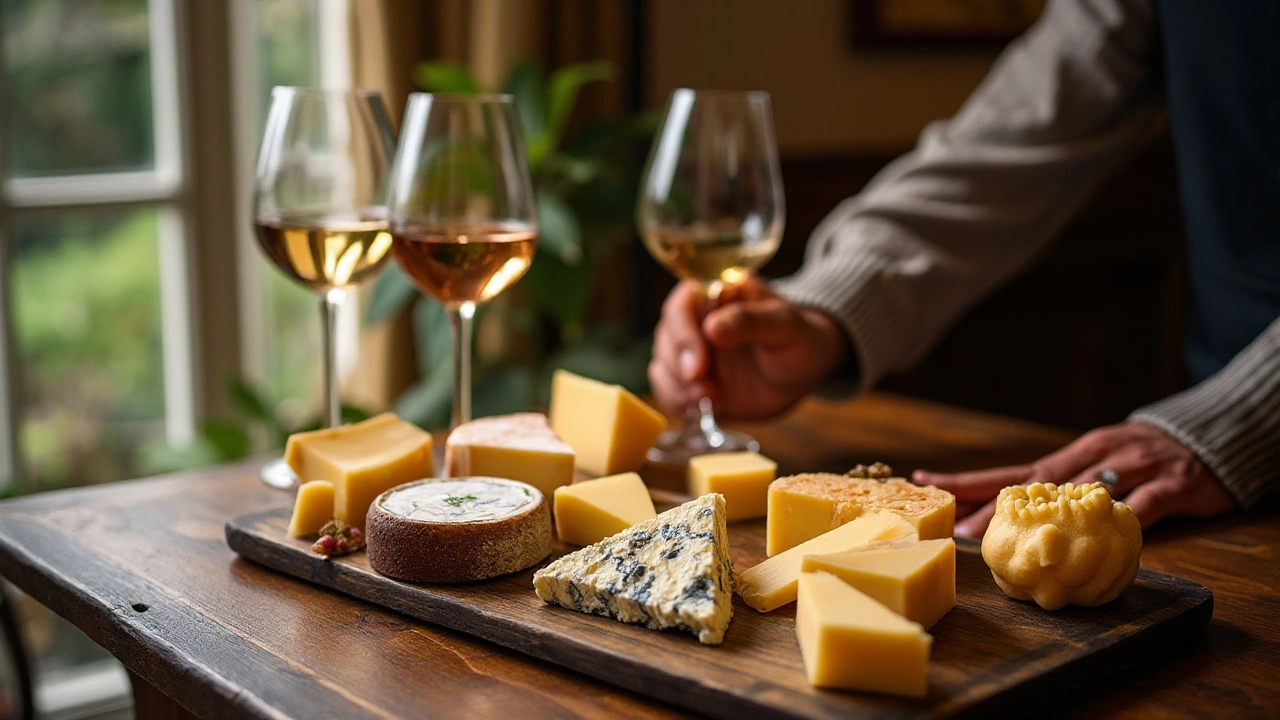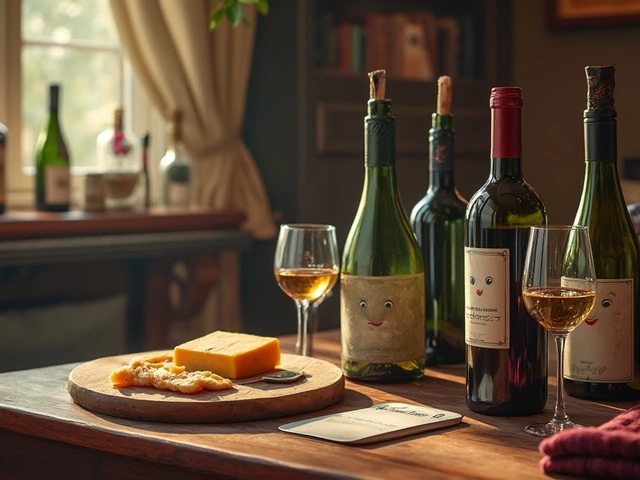Pairing Wines with Cheese Made Simple
If you’ve ever stared at a cheese board and wondered which wine to grab, you’re not alone. The good news? You don’t need a sommelier degree to make tasty combos. Below are straightforward rules that work for most wines and cheeses, plus a few surprise pairings that will impress your friends.
Start with the Basics: Match Weight and Flavor
Think of wine and cheese as dance partners. A light cheese like fresh mozzarella needs a light wine – try a crisp Sauvignon Blanc or a dry rosé. Heavy, creamy cheeses such as brie or camembert hold their own against fuller reds like Pinot Noir or even a buttery Chardonnay. The key is to balance intensity: a bold cheese can overwhelm a delicate wine, while a strong wine can mask a mild cheese.
Another quick trick is to mirror flavors. If a wine has citrus notes, pair it with a cheese that has a tangy bite, like goat cheese. Earthy wines like Cabernet Sauvignon love earthy cheeses – aged cheddar or gouda are perfect matches. This simple flavor echo makes the pairing feel natural without overthinking it.
Try These Ready‑to‑Use Pairings
Red wines: Pair a medium‑bodied Merlot with sharp cheddar, or go for a spicy Zinfandel alongside smoked gouda. If you’re serving a rustic red like Malbec, a hearty blue cheese brings out the fruit in the wine.
White wines: A buttery Chardonnay loves buttery cheeses – think triple‑cream brie or ripe mozzarella. Light, acidic whites such as Pinot Grigio shine with fresh ricotta or feta. For a crisp Riesling, try a slightly sweet cheese like Havarti with a honey drizzle.
Sparkling wines: The bubbles cut through rich, creamy cheeses. Pair Prosecco with creamy brie, or Champagne with a sharp parmesan shave. Even a dry sparkling rosé works nicely with a mild, nutty cheese like Gruyère.
When you’re unsure, keep a cheese board variety and let guests experiment. Offer a mix of textures – soft, semi‑soft, hard, and blue – and give a few wine options. People naturally gravitate toward the combos that make their palate happy.
Lastly, don’t forget temperature. Serve whites and sparkling wines chilled (around 45‑50°F) and reds at cellar temperature (about 60‑65°F). Cheese should be at room temperature, which means taking it out of the fridge about 30 minutes before serving. This simple step lets flavors shine.
With these easy guidelines, you can build a cheese and wine spread that feels thoughtful but isn’t stressful. Grab a bottle, slice some cheese, and let the tasting adventure begin!
Exploring the delightful world of wine and cheese pairing involves more than just a simple matching of flavors. This guide unravels the complexities and subtleties of creating harmonious combinations that enhance taste and experience. Delve into tips for choosing the perfect wine for your cheese platter and discover surprising pairings that will impress even the most discerning palate. Whether you're a novice or a seasoned expert, this article offers invaluable insights to elevate your culinary enjoyment.
View Details

